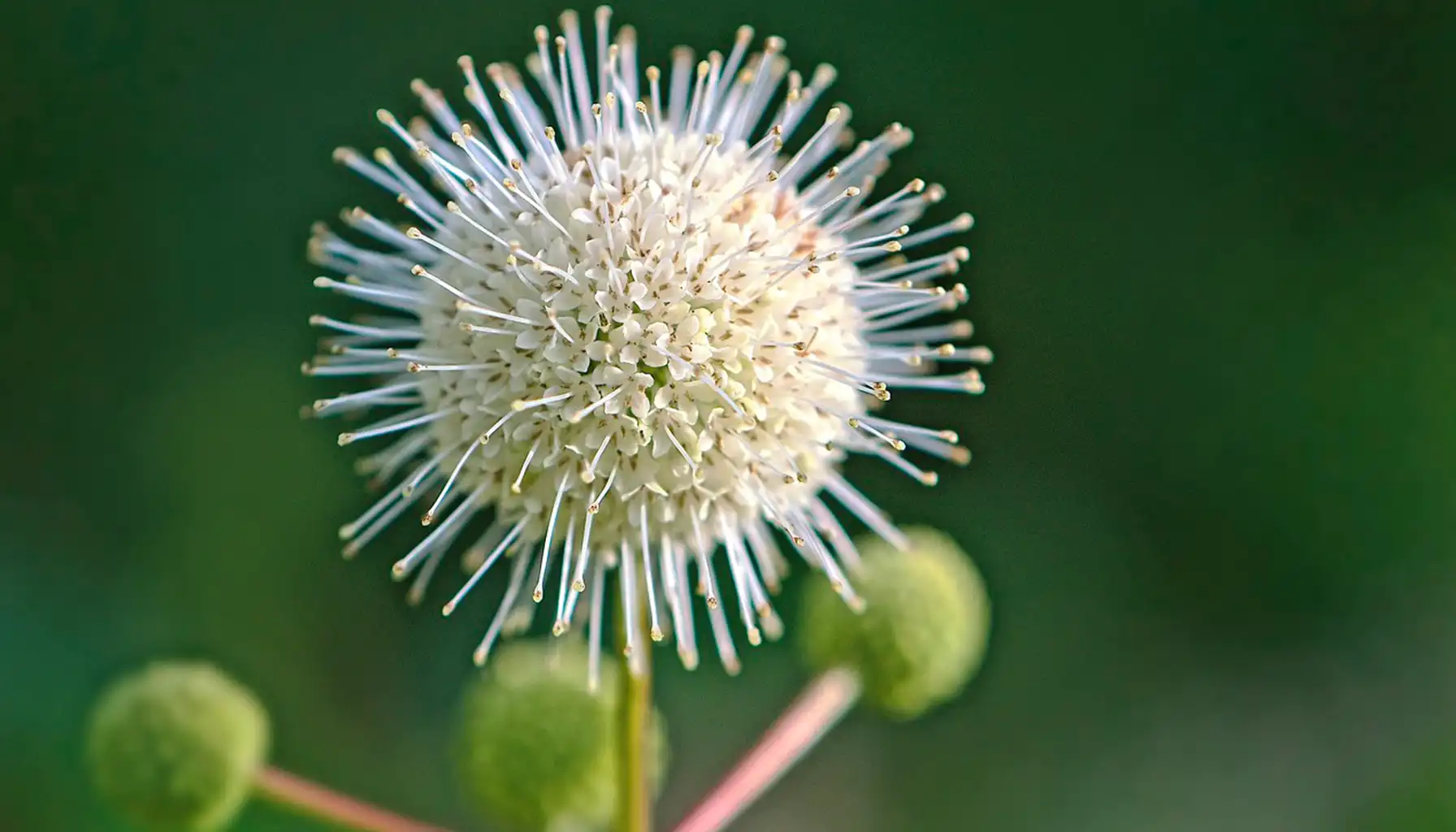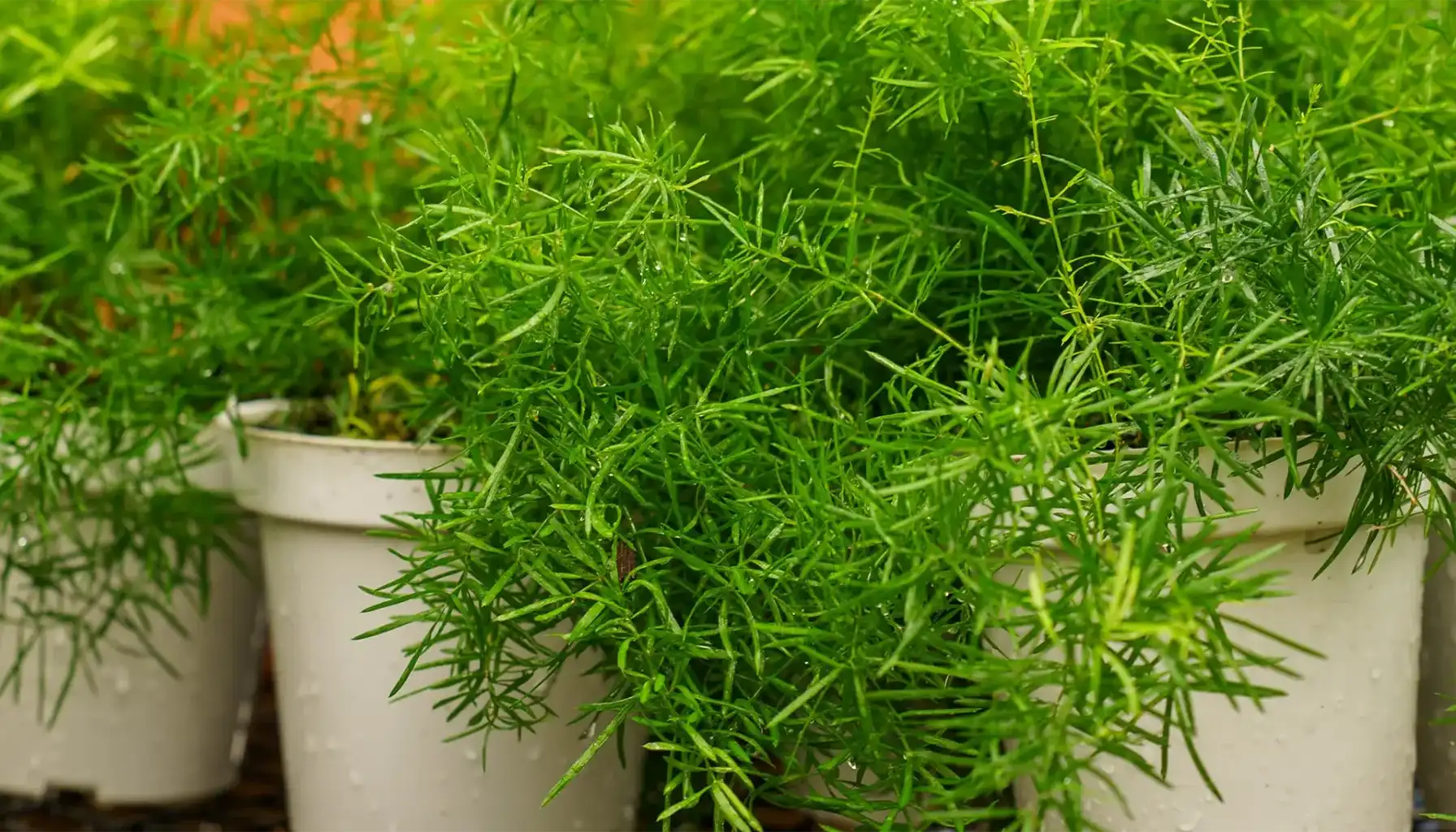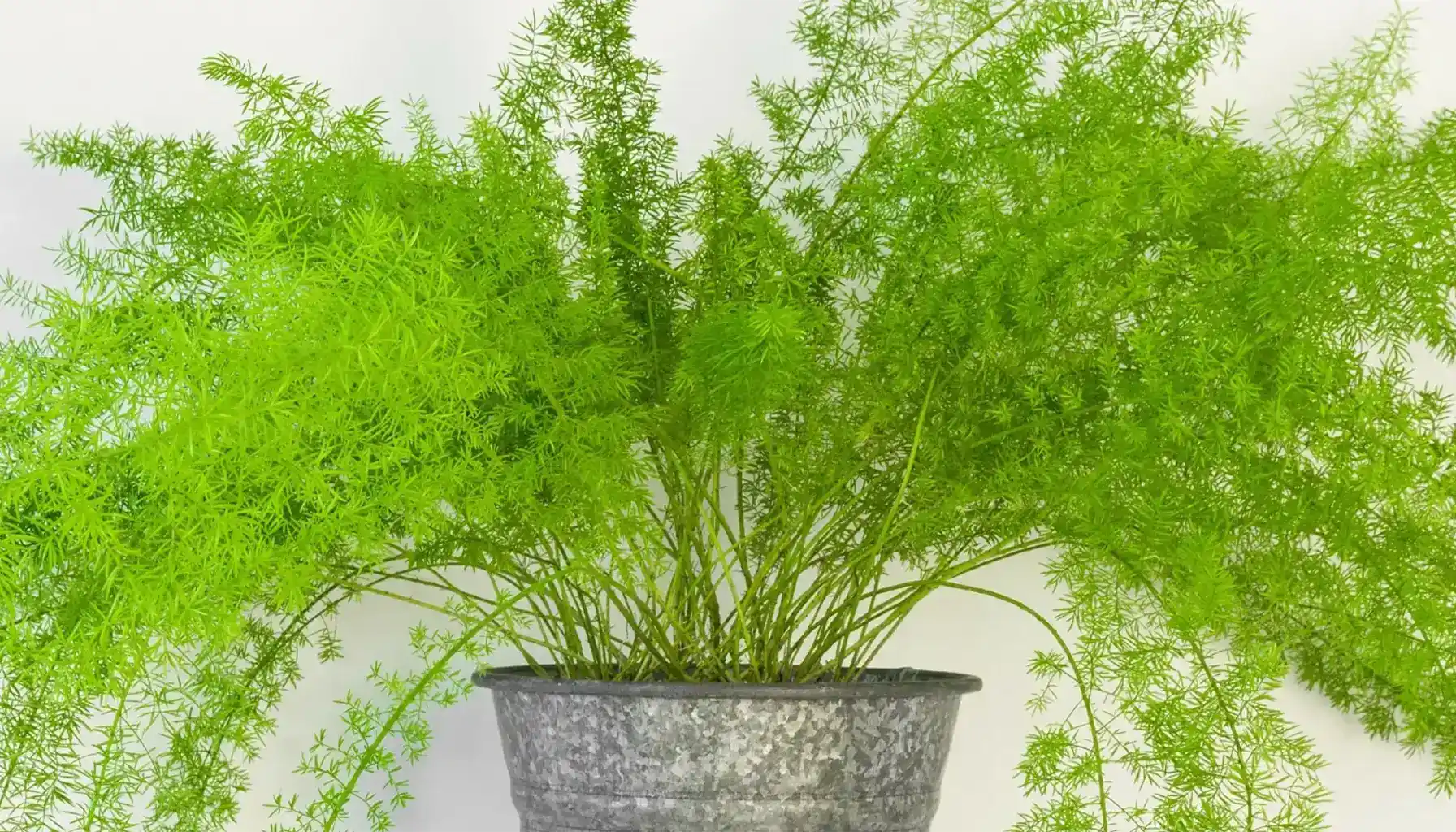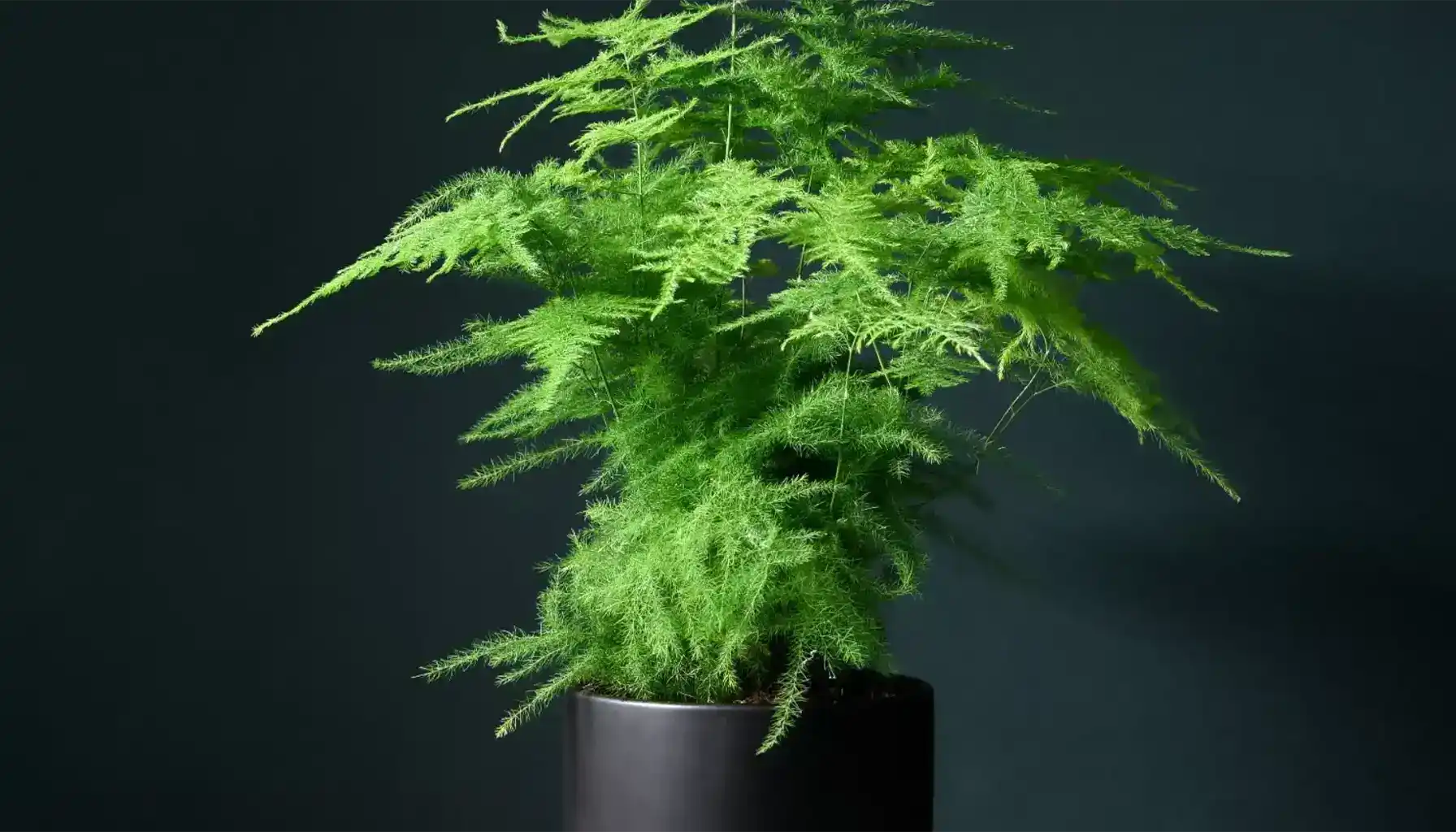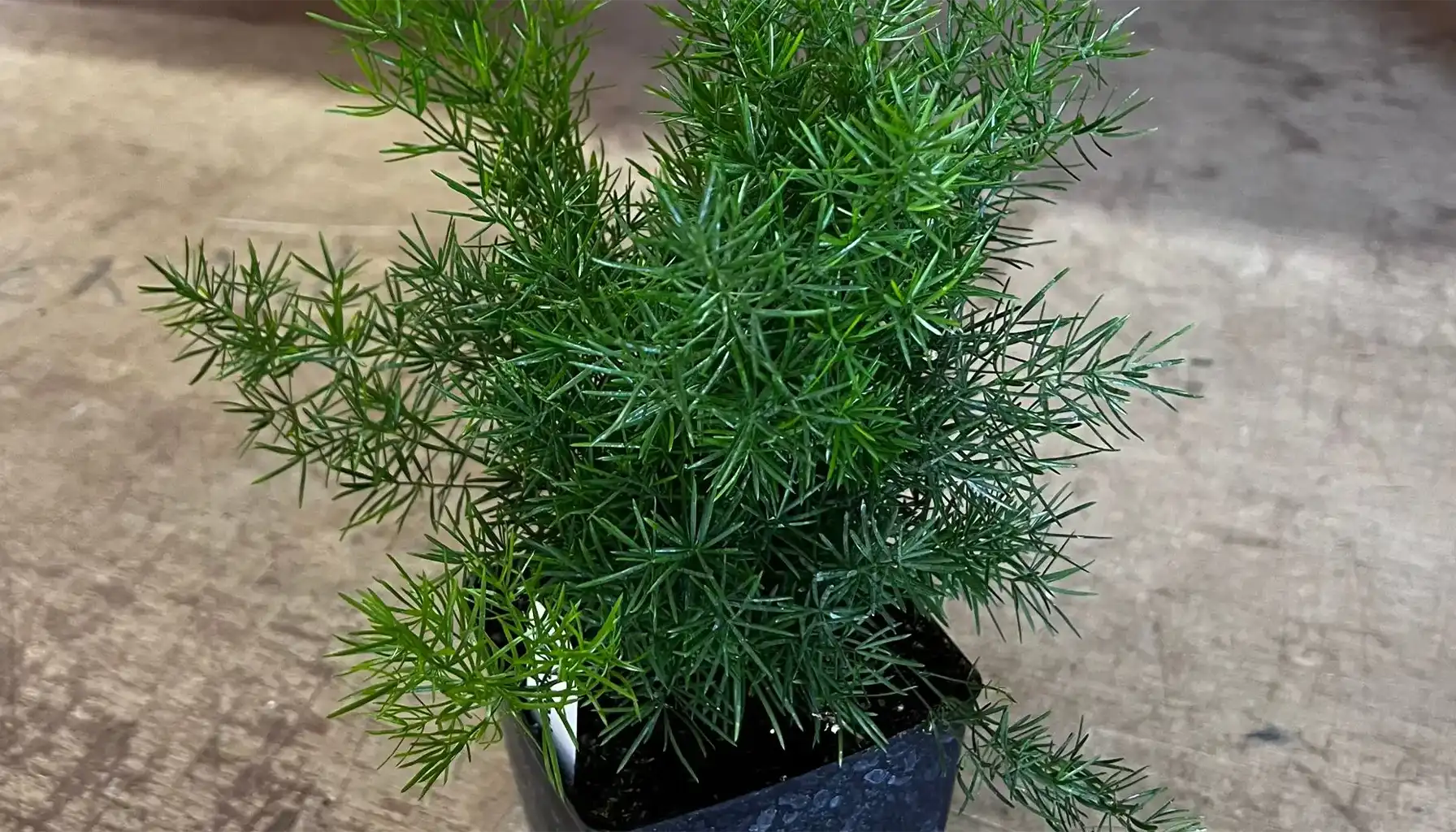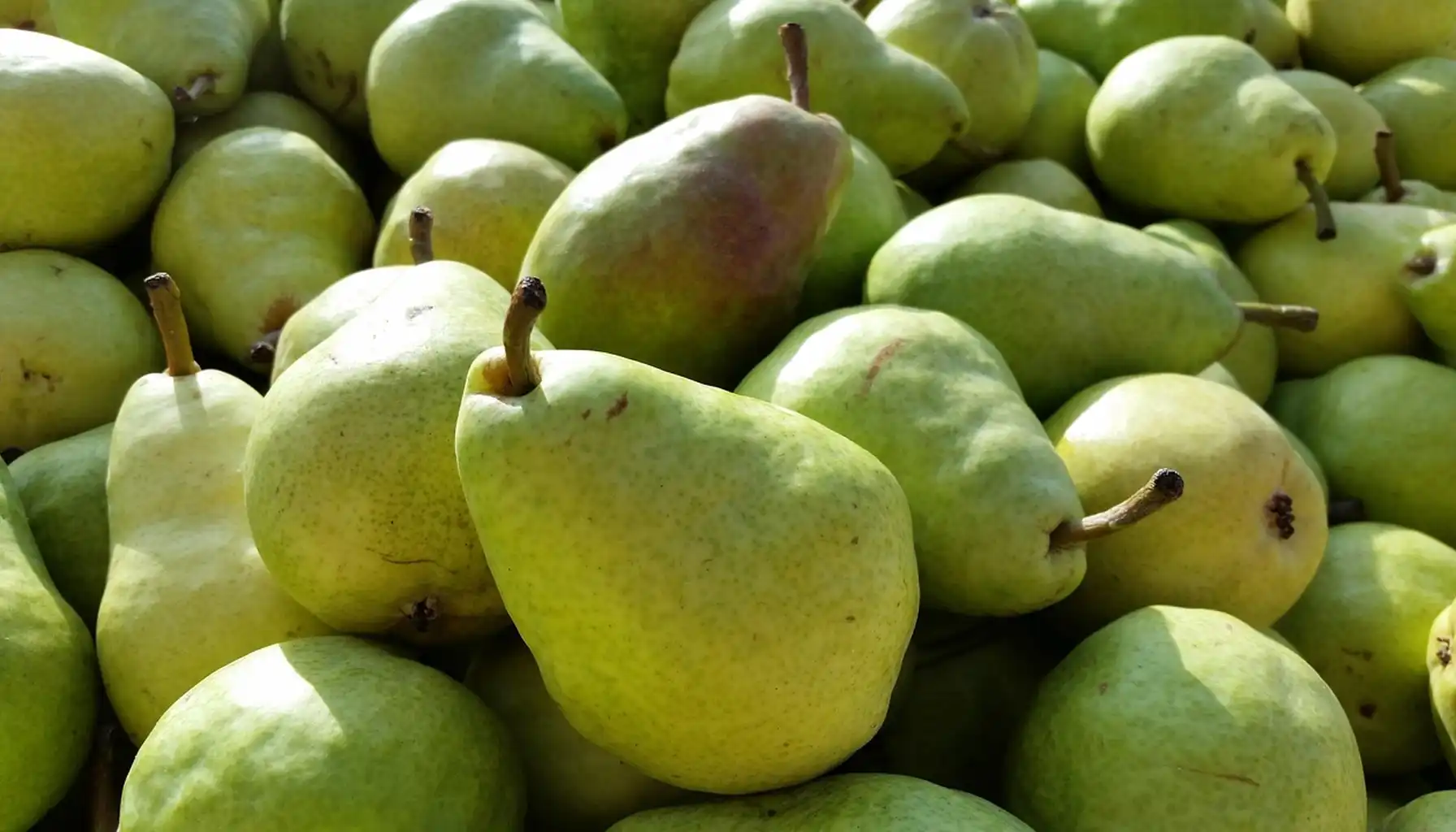This plant is not a true fern but a member of the Asparagaceae family, related to the edible asparagus. You can learn the basics of asparagus fern care to keep these plants alive.
The fern is pretty adaptable, but it has its own preferences for light, water, and soil. To know exactly what we mean, download the plant identifier and see how easy it is to take care of your plant, without any guesses and assumptions.
What Is It?
The fern asparagus is a decorative evergreen perennial. It belongs to the genus Asparagus, which also includes the edible garden asparagus. Unlike true ferns, like Boston Fern, which reproduce through spores, asparagus spreads by seeds or division.
Species most commonly grown as ornamentals include Asparagus setaceus with lace-like leaves, and Asparagus densiflorus, which includes the popular foxtail and sprengeri cultivars.
These plants produce cladodes, leaf-like structures that look like soft needles. Over time, they form dense, fluffy greenery.
Asparagus also flowers and fruits when mature, though its blooms are small. The flowers give way to berries that are green, glossy red, or black as they ripen. While attractive, these fruits are toxic if eaten and can irritate the skin.
Native to southern Africa, asparagus have adapted to many environments around the world. In warm regions, they are sometimes grown outdoors as groundcovers, though they may spread aggressively and become invasive.
General Care Guide
Soil and Water
The asparagus fern plant care begins with the soil. They prefer a loose, well-draining mix that holds some moisture but never stays soggy. A blend of potting soil with perlite or sand works pretty fine.
Water thoroughly when the top inch of soil feels dry, allowing excess water to drain. Overwatering can lead to root problems, but prolonged dryness may cause leaves to drop.
Humidity and Temperature
Asparagus likes moderate to high humidity. Bathrooms and kitchens are good spots indoors. If the air is dry, mist the foliage or use a humidity tray. They grow best between 60-75°F but can tolerate short drops to near freezing if protected.
Light Needs
What are asparagus fern light requirements? Bright, indirect light is ideal, such as near an east-facing window or slightly back from a south-facing one. Too much direct sun can scorch foliage, while too little light may cause weak, yellowing growth.
Pruning and Growth Cycle
Regular trimming helps maintain a neat shape and removes yellow or woody stems. Old growth can be cut back in spring to encourage lush new shoots. These plants grow quickly in favorable conditions and may need annual repotting as their tuberous roots expand.
How to Care for It
How to care for asparagus fern? Keep soil slightly moist, provide bright filtered light, and maintain humidity.
Care Do’s & Don’ts
Do’s
Use a well-draining soil mix
Provide bright, indirect light
Mist regularly in dry environments
Trim old stems to refresh growth
Don’ts
Don’t expose to harsh afternoon sun indoors
Don’t let soil stay waterlogged
Don’t neglect repotting when roots outgrow containers
Don’t place directly near heating vents or cold drafts
Propagation Methods
Division of Tubers
The most common method of asparagus fern propagation is division. These plants develop thick tuberous roots that store water and nutrients.
When a plant becomes rootbound or outgrows its pot, remove it and split the root mass into smaller sections. Each division should contain several healthy stems and tubers. Repot in fresh soil, water thoroughly, and new growth should appear within weeks.
Propagating From Seed
Seeds are less used since they take longer to germinate and require patience. If you do attempt this method, harvest mature red berries from the plant, clean the seeds, and soak them in water overnight.
Sow in a moist, well-draining mix, keeping the soil consistently warm. Germination usually takes 3-4 weeks. Seed-grown plants will take longer to reach full size, but can be an interesting way to start fresh.
How to Propagate Asparagus Fern (Quick Steps)
Remove the plant from its pot
Shake off excess soil and look for natural clumps in the root system
Separate into sections, ensuring each has stems and tubers
Repot divisions in fresh soil with good drainage
Water deeply and place in bright, indirect light
Types of Asparagus Fern
Asparagus fern types are different; it is not one single plant but a group of ornamental species and cultivars with different growth habits.
Foxtail and Myers Forms
The foxtail asparagus fern (Asparagus densiflorus ‘Meyeri’) has upright stems that resemble bottlebrushes or fox tails. This dense, bushy habit makes it perfect as a focal point in containers. Another popular label for this form is the myers asparagus fern.
Sprengeri Types
The asparagus fern sprengeri (A. densiflorus ‘Sprengeri’) is probably the most widely grown. It has arching, trailing stems with soft, needle-like cladodes. Ideal for baskets and mixed planters, it creates a cascading effect.
Plumosa and Others
Asparagus setaceus is often sold as plumosa or lace fern. It has the finest, most delicate foliage of the group, looking like lace or soft feathers.
Large and Hanging Ferns
Some varieties naturally grow quite big. A large asparagus fern can fill patio containers or become a groundcover in frost-free climates. In smaller homes, a hanging asparagus fern is a great greenery for high spaces.
Type / Cultivar | Latin Name | Habit | Indoor/Outdoor Use | Notes |
Foxtail / Myers | A. densiflorus ‘Meyeri’ | Upright, bushy | Containers, focal points | Dense “bottlebrush” stems |
Sprengeri | A. densiflorus ‘Sprengeri’ | Trailing, arching | Hanging baskets, beds | Also called sprengeri asparagus fern or sprenger’s fern |
Plumosa | A. setaceus | Fine, feathery | Indoor décor, floral work | Lace-like foliage |
Ming | A. retrofractus | Pom-pom clumps | Large containers | Less common, zig-zag stems |
Indoor vs Outdoor Growing
Indoor Growing
An indoor asparagus fern does best in bright, indirect light. East- or north-facing windows are ideal; direct afternoon sun can scorch delicate cladodes.
Indoors, mist or use a pebble tray to keep foliage fresh. These plants adapt well to containers and hanging baskets.
Outdoor Growing
An asparagus fern outdoors can live in USDA zones 9–11, where frost is rare. In these regions, it’s planted in containers, as bedding, or as a cascading accent in garden borders.
Its roots are hardy enough to sometimes survive brief cold snaps down to zone 7 if mulched. In mild climates, however, it may spread aggressively, displacing native vegetation. Gardeners in some regions grow it only in pots to keep it contained.
Climbing Varieties
Some species, like the climbing asparagus fern, have long vining stems equipped with small thorns. These can scramble over fences or trellises, creating a dense green screen. While attractive, this type has a strong tendency to naturalize in warm zones, so it should be managed carefully.
Troubleshooting Common Problems
Yellowing and Needle Drop
The most frequent problem is foliage color change. An asparagus fern turning yellow usually shows inconsistent watering or low humidity. If the soil dries too often, the cladodes lose their bright green tone. Overwatering can cause the same problem by suffocating roots.
General asparagus fern yellowing can also happen because of poor light. Without enough indirect sun, stems grow weak, pale, and thin. If placed too close to strong sunlight, foliage may scorch or crisp at the edges.
Leggy Growth
Long, sparse stems are a sign that the plant is reaching for more light. Move it closer to a bright window or supplement with grow lights.
Rootbound Plants
Fast growth means roots can quickly fill a container. Signs: water draining too fast, soil drying unusually quickly, or roots pushing up at the surface. Repot it into a slightly larger container with fresh soil.
Pests
Symptom | Likely Cause | Solution |
Yellowing foliage | Over/underwatering, low humidity, poor light | Adjust watering, mist regularly, move to bright indirect light |
Brown tips / scorch | Too much direct sun | Relocate to filtered light |
Leggy stems | Insufficient light | Increase exposure to bright indirect light |
Rapid drying soil | Rootbound plant | Repot with fresh soil |
Pest spots / webbing | Spider mites, mealybugs | Treat with neem oil or insecticidal soap |
Not into chemical treatments? Read about Organic Pest Control: Keep Your Garden Chemical-Free.
Safety for Pets
The foliage and berries contain saponins, compounds that are mildly toxic when ingested. For this reason, pet owners should be cautious when placing these plants indoors or outdoors.
There are plenty of plants that are actually dangerous for you and your pet. Read more at Beauty Can Kill: A Guide to Toxic Plants You Should Know
An asparagus fern toxic to cats can cause digestive upset if a curious feline chews on the leaves or berries.
Dogs and Asparagus Ferns
Pet owners may also ask: is asparagus fern toxic to dogs? Yes. Ingesting leaves or berries can still result in gastrointestinal issues such as vomiting or abdominal pain.
Safe Placement Tips
The safest approach is prevention. Keep asparagus in spots pets cannot easily reach, such as hanging baskets, elevated plant stands, or rooms where animals are not allowed. If outdoor ferns are part of your landscaping, consider fencing or container planting to reduce exposure.
Conclusion
We’ve explored the essentials of care, like watering, pruning and handling common problems like yellowing foliage. We’ve also looked at the many types, like foxtail and sprengeri, plumosa, and ming.
Versatile, attractive, and resilient, the asparagus fern remains a classic choice for gardeners and plant lovers.
FAQ
How often should I water an asparagus fern?
Water when the top inch of soil feels dry. Give it a deep soak, then let excess water drain. Avoid letting the plant sit in standing water.
Can asparagus grow in low light?
They tolerate low light but won’t thrive. Growth slows, stems become thin, and foliage may yellow. Bright, indirect light is best for a healthy plant.
Do asparagus need high humidity?
Yes. While they can survive in average indoor air, they look their best with extra humidity. Misting, pebble trays, or keeping them in naturally humid rooms helps.
How often should I repot?
Every year or two, depending on growth. Their tuberous roots expand quickly and can even push against pot walls, so move them into slightly larger containers as needed.
Is asparagus invasive outdoors?
In mild climates, yes. They spread rapidly and can displace native vegetation. Plant them in containers outdoors to prevent unwanted spread.
Does asparagus flower?
Yes, though blooms are small and often unnoticed. On mature plants, the flowers may produce red or black berries if pollinated.
Related AI Plant Finder Posts
